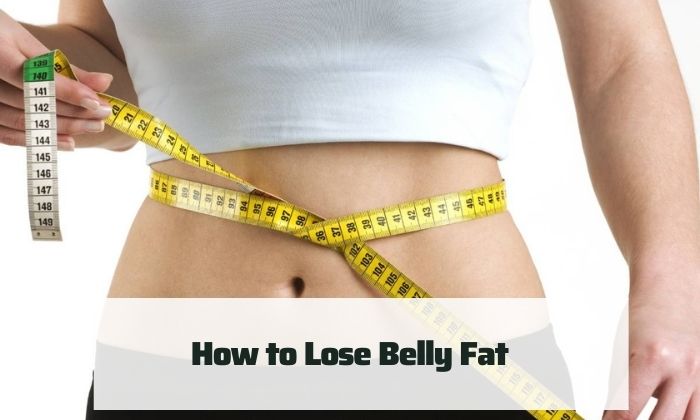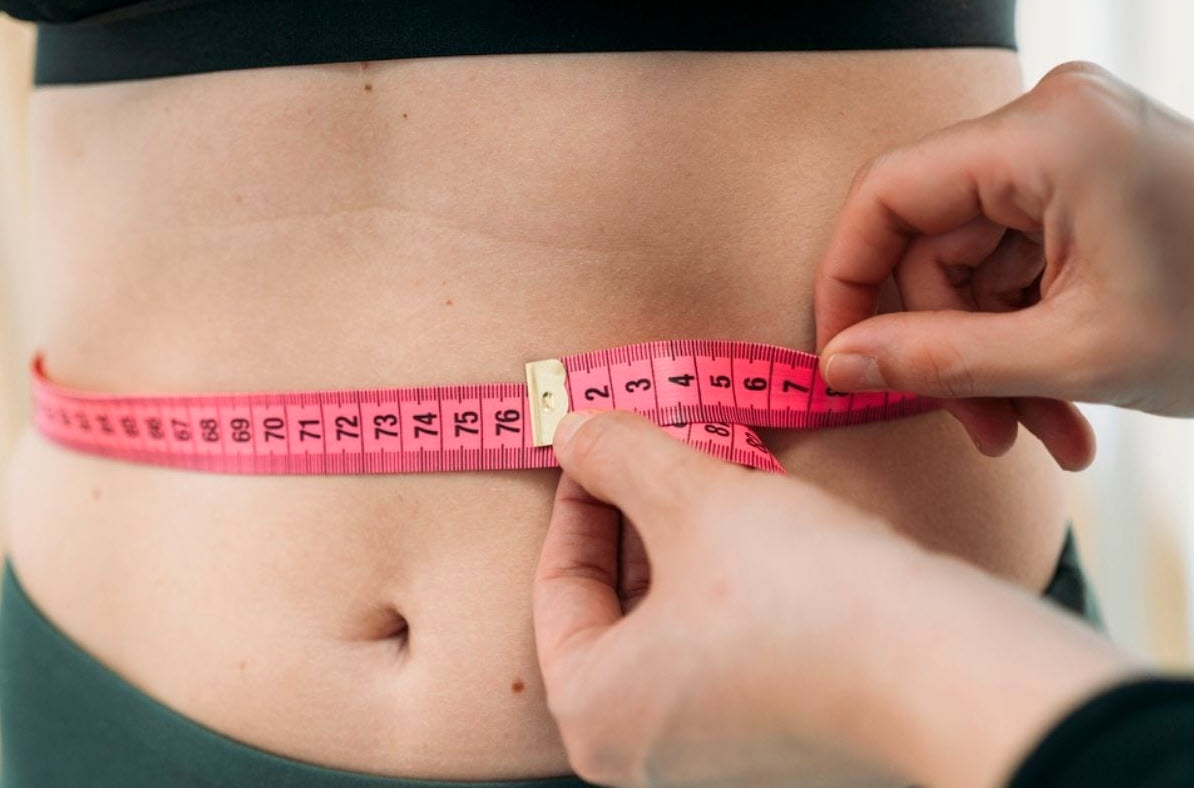How to Lose Belly Fat – The Best Solution

Maintaining a trim waistline benefits you in more ways than one. It can help you live longer. Heart disease, diabetes, and possibly cancer are all connected to having a larger waistline. Losing weight, particularly abdominal fat, increases blood vessel function and sleep quality.
When dieting, it’s impossible to target belly fat particularly. But, according to Kerry Stewart, Ed.D., director of Clinical and Research Physiology at Johns Hopkins, losing weight overall will help shrink your waistline; more importantly, it will help reduce the dangerous layer of visceral fat, a type of fat within the abdominal cavity that you can’t see but that raises health risks.
Here’s how to lose belly fat. See detail information in this article.

How to Lose Belly Fat
1. Eat plenty of soluble fiber
Soluble fiber absorbs water and creates a gel, which helps food travel through your digestive system more slowly.
According to studies, this sort of fiber aids weight loss by making you feel full, causing you to eat less naturally. It may also reduce the number of calories absorbed by your body from eating.
Furthermore, soluble fiber may aid in the reduction of abdominal fat.
An observational study of over 1,100 adults indicated that increasing soluble fiber consumption by 10 grams reduced belly fat accumulation by 3.7 percent over a 5-year period.
Make an effort to eat high-fiber foods on a daily basis. The following foods are good sources of soluble fiber:
- shirataki noodles with flax seeds
- Blackberries
- Brussels sprouts
- avocados
- legumes
2. Avoid foods that contain trans fats
Pumping hydrogen into unsaturated fats like soybean oil produces trans fats.
They’re still in some margarines and spreads, and they’re frequently added to packaged meals, but many food manufacturers have abandoned their use.
In observational and animal research, these lipids have been associated to inflammation, cardiac disease, insulin resistance, and belly fat growth.
Monkeys who ate a high trans fat diet gained 33% more belly fat than those who ate a high monounsaturated fat diet, according to a 6-year study.
Read ingredient labels carefully to help reduce belly fat and safeguard your health, and avoid goods that contain trans fats. These fats are frequently referred to as partially hydrogenated fats.
3. Don’t drink too much alcohol
In modest doses, alcohol can be beneficial to your health, but if you drink too much, it can be dangerous.
According to research, drinking too much alcohol can cause you to grow belly fat.
Heavy alcohol intake is linked to a dramatically higher risk of developing central obesity, or excess fat accumulation around the waist, according to observational research.
Reducing your alcohol consumption may help you lose weight. You don’t have to completely give up alcohol, but limiting how much you consume in a single day can help.
More than 2,000 participants took part in one study on alcohol consumption.
The researchers discovered that those who drank alcohol on a daily basis but consumed less than one drink per day had less belly fat than those who drank less frequently but consumed more alcohol on the days they drank.
4. Eat a high protein diet
Protein is an essential ingredient for weight loss.
Increased protein intake boosts the production of the fullness hormone PYY, which suppresses hunger and promotes satiety.
Protein also helps you maintain muscle mass while losing weight by increasing your metabolic rate.
Many observational studies have found that those who consume more protein had less belly fat than those who consume less protein.
At each meal, make sure to incorporate a good protein source, such as:
- beef
- fish,
- eggs
- whey protein
- beans
5. Reduce your stress levels
Stress causes the adrenal glands to generate cortisol, often known as the stress hormone, which causes you to accumulate belly fat.
High cortisol levels have been shown in studies to enhance hunger and promote belly fat storage.
Furthermore, women with a wide waist are more likely to create more cortisol in reaction to stress. Cortisol elevation contributes to fat growth around the midsection.
Engage in joyful activities that decrease tension to aid in the reduction of belly fat. Yoga and meditation are both effective strategies.
6. Don’t eat a lot of sugary foods
When sugar is ingested in excess, it contains fructose, which has been related to a number of chronic disorders.
Heart disease, type 2 diabetes, obesity, and fatty liver disease are among them.
Observational studies have found a link between a high sugar diet and an increase in abdominal fat.
It’s crucial to remember that belly obesity can be caused by more than just excessive sugar. Even healthier sweets like honey should be used in moderation.
7. Do aerobic exercise (cardio)
Aerobic exercise (cardio) is a great strategy to get in shape and burn calories.
It’s also one of the most effective ways to lose abdominal fat, according to studies. However, the evidence on whether moderate or high-intensity exercise is better is equivocal.
In any event, your workout program’s frequency and duration are more significant than its intensity.
According to one study, postmenopausal women who exercised for 300 minutes per week shed more fat from all places than those who exercised for 150 minutes per week.

8. Cut back on carbs — especially refined carbs
Reducing your carb intake can help you lose weight, especially abdominal fat.
People who are overweight, at risk for type 2 diabetes, and women with polycystic ovarian syndrome lose belly fat on diets with less than 50 grams of carbs per day (PCOS).
You don’t have to stick to a low-carb diet to lose weight. According to several studies, merely substituting unprocessed starchy carbs for refined carbs can enhance metabolic health and reduce belly fat.
People who ate the most whole grains were 17 percent less likely to have excess abdominal fat than those who ate a diet high in refined grains, according to the Framingham Heart Study.
9. Perform resistance training (lift weights)
Resistance exercise, sometimes referred to as weight lifting or strength training, is essential for maintaining and growing muscle mass.
Resistance training may help persons with prediabetes, type 2 diabetes, and fatty liver disease lose belly fat, according to research.
In fact, one research of overweight teenagers found that combining strength training and aerobic exercise resulted in the highest reduction in visceral fat.
It’s a good idea to seek advise from a licensed personal trainer if you decide to begin lifting weights.
10. Avoid sugar-sweetened beverages
Liquid fructose, which is abundant in sugar-sweetened beverages, can cause you to build belly fat.
Sugary drinks have been linked to an increase in liver fat in studies. People who ingested high fructose beverages gained considerable belly fat in a 10-week study.
Sugary drinks appear to be much more harmful than high-sugar eating.
Because liquid calories aren’t processed the same way solid calories are, you’re more likely to consume too many calories later and store them as fat.
It’s advisable to stay away from sugar-sweetened beverages like these if you want to lose belly fat.
- alcoholic
- sugar soda
- punch
- sweet tea
11. Get plenty of restful sleep
Sleep is essential for a variety of health factors, including weight management. People who don’t get enough sleep are more likely to acquire weight, including belly fat, according to studies.
Those who slept less than 5 hours per night were considerably more likely to gain weight than those who slept 7 hours or more per night, according to a 16-year study involving more than 68,000 women.
Excess visceral fat has also been linked to sleep apnea, a disease in which breathing stops periodically throughout the night (48Trusted Source).
Make sure you’re receiving enough quality sleep in addition to sleeping at least 7 hours per night.
Speak with a doctor if you think you could have sleep apnea or another sleep issue.
12. Track your food intake and exercise
Many factors can help you lose weight and belly fat, but the most important factor is to consume less calories than your body requires for weight maintenance.
You can track your calorie intake by keeping a meal diary or utilizing an online food tracker or app. This method has been proved to help people lose weight.
Furthermore, food-tracking software allows you to monitor your protein, carbohydrate, fiber, and vitamin intake. Many of them also allow you to keep track of your workouts and physical activity.
On this page, you’ll find five free apps/websites for tracking nutrient and calorie intake.
The bottom line
There are no quick fixes for reducing belly fat. Weight loss will always need some effort, dedication, and perseverance on your part.
If you successfully implement some or all of the tactics and lifestyle goals outlined in this article, you will undoubtedly reduce weight around your waist. See more useful article at my website y2kcenter.org




